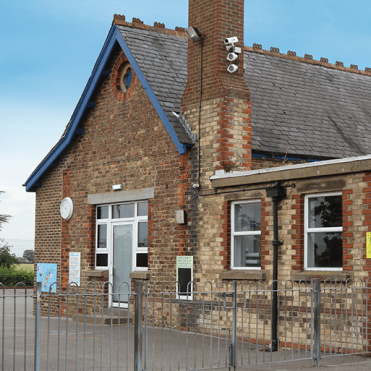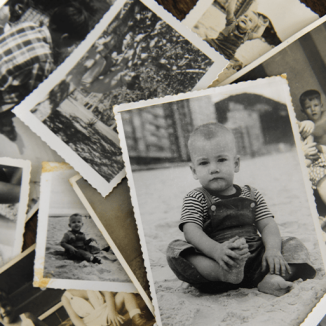Year 1
Welcome to Class 1.
Autumn Term
Topic: 'Childhood’
In the Childhood project, your child will learn words and phrases related to the passage of time. They will explore artefacts to help them to understand childhood in the past and how childhood has changed over time. They will explore the six stages of life and explore timelines and family trees. Everyday life in the 1950s will be explored, including shopping, transport, family life and childhood. They will also learn about the significance of Queen Elizabeth II's coronation in 1953 by studying photographs and online sources. The children will use maps to explore how places have changed over time and highlight any similarities or differences between childhood today and childhood in the 1950s. At the end of the project, they will create knowledge organisers for children who are about to study the topic of childhood.
Year-1/Childhood-knowledge-organiser.pdf
Year-1/Childhood-home-learning-tasks.pdf
Spring Term

Topic: ‘Bright Lights, Big City'
Hop on board a big, red bus and head for England’s capital. Yes, that’s right, we’re on our way to London!
In the Bright Lights, Big City project, your child will learn the story of local landmarks. They will learn about the countries that make up the United Kingdom, including their location, capital cities and some of their physical and human features. They will have the opportunity to do map work, using compasses and positional and directional language to plan routes around London. They will research the cause and impact of the Great Fire of London and look at some famous London landmarks. They will learn about other capital cities around the world, including Kuala Lumpur, and compare how they are similar and different to London.
Cities are exciting places. Why not visit a local city to spot interesting vehicles, buildings and landmarks? Alternatively, you could search the web for images, information and film clips about London and keep a scrapbook of your findings. You could also visit the local library to see if you can find some colourful books of nursery rhymes and traditional songs to enjoy together.
Year-1/Bright-Lights-Big-City-knowledge-organiser.pdf
Year-1/Bright-Lights-Big-City-home-learning-tasks.pdf
Summer Term

Topic: ‘School Days’
In the School Days project, your child will have the opportunity to take part in a traditional Victorian class and will learn about the differences between schooling in the Victorian era and schooling today. They will learn about objects found in a Victorian classroom and how they were used. They will research Samuel Wilderspin, an important figure in the development of schooling for young children in the Victorian era, whose ideals are reflected in schooling today. They will learn to describe the passage of time through study of past, present and future tense vocabulary.
Year-1/School-Days-knowledge-organiser.pdf
Year-1/School-Days-home-learning-tasks.pdf
Read, Write, Inc
At Kilnhurst, St Thomas your child is learning to read with Read Write Inc.
Phonics, a very popular and successful literacy programme.
Your child will learn to read in a very simple way.
He or she will learn to:
1. Read letters by their ‘sounds’
2. Blend these sounds into words
3. Read the words in a story.
Full information for home guidance can be found here
Year-1/RWI-reading-at-home-book-1.pdf
Year-1/RWI-reading-at-home-book-2.pdf
How to listen to your child read
• Do not read the book aloud before your child reads it to you.
• Ask your child to read the sounds and words before he or she
reads the story.
• When your child reads the story, ask him or her to sound out
the words that he or she can’t read automatically. Don’t allow
your child to struggle too much. Praise your child when he or
she succeeds.
• Read back each sentence or page to keep the plot moving.
(Your child’s energy is going into reading the words not
the story.)
• Do not ask your child to guess the word by using the pictures.
• Do it all with patience and love!
We have a storytime every day at school so children develop alove of stories.
We hope that you will do the same by reading a bedtime story to your child every night.
We have wonderfulbooks in school for you to borrow and your child will select a weekly library book.
Where else can I find information?
Watch video tutorials on http://www.ruthmiskin.com/en/parents/ to help you to understand more about Read Write Inc. Phonics and how to help your child read and write at home.
Other useful websites:
Ruth Miskin Facebook:
https://www.facebook.com/miskin.education
Free e-books for home reading:
http://www.oxfordowl.co.uk/Reading/
YouTube
https://www.youtube.com/ruthmiskintrainingedu?mc_cid=63bfb74b56&mc_eid=4ec2ad9cea
Glossary
‘Special Friends’
Special friends are a combination of two or three letters representing one sound, e.g. ck, ay, igh, oa.
Fred Talk
Fred the Frog helps children read and spell. He can say the sounds in words, but he can’t say the whole word, so children have to help him.
To help children read, Fred (the teacher) says the sounds and then children say the word.
For example, Fred says c-a-t, children say cat, Fred says l-igh-t, children say light.
Teachers are encouraged to use Fred Talk through the day, so children learn to blend sounds.
For example:
Play Simon Says: Put your hands on your h-ea-d/ f-oo-t/ kn-ee.
Put on your c-oa-t/ h-a-t/ s-c-ar-f.
Set the table with a b-ow-l/ f-or-k/ s-p-oo-n.
‘Fred in your head’
Once children can sound out a word, we teach them to say the sounds silently in their heads.
We show them how to do this by:
1. whispering the sounds and then saying the whole word;
2. mouthing the sounds silently and then saying the whole word;
3. saying the whole word straight away.
Perfect pencil grip
Children sit at a table to write.
They hold up a pencil in a tripod pencil grip with the non-writing hand flat holding their paper.
How can I support my child’s reading and writing?
Here are the top five things you can do.
1. Ask your child to read the Speed Sound cards speedily.
2. Use Fred Talk to help your child read and spell words.
3. Listen to your child read their Read Write Inc. Storybook every day.
4. Practise reading Green and Red Words in the Storybook speedily.
5. Read stories to your child every day.
What will my child bring home to read?
· ‘Last and past’ Storybooks: contain sounds and words the children know. This is the Storybook they have just read at school and maybe some they have read before, for extra practice. Please don’t worry that books are too easy. Children enjoy re-reading stories they know well. Their speed and understanding improves on every read.
· Book Bag Books: matched to the Storybooks children read in school and used for extra practice. They include many of the same reading activities that we use in class and include parent guidance.
· More Storybooks and Non-fiction books: matched to the sounds and words your child knows well.
· Picture books to share with you: read these stories to children or encourage them to retell the story by looking at the pictures. They are not expected to read the story themselves.
· Speed Sounds cards: for children to practise reading speedily. If needed, show your child the picture side of the card to help them remember the sound.
· Red Word book pages: challenge your child to read the Red Words speedily across the rows and down the columns. Set a timer – can they beat yesterday’s time?
How can I support my child to learn Set 1 sounds and to blend?
- Use pure sounds, not letter names. Watch the ‘how to say the sounds’ parent film on http://www.ruthmiskin.com/en/parents/.
-
Watch the ‘Reading the stretchy sounds with your child’, ‘Reading the bouncy sounds with your child’ and ‘Reading the digraphs with your child’ parent films on http://www.ruthmiskin.com/en/parents/ to see how to teach Set 1 sounds.
-
Practise reading known Set 1 Speed Sounds cards speedily. If needed, show your child the picture side of the card to help them remember the sound.
We teach children to read and spell using Fred. He is a toy frog who can say the sounds in words, but not the whole word. Children have to help him.
To help children learn to blend, we say the sounds as Fred and then children repeat the sounds and say the whole word.
Here are two ways you can use Fred Talk at home:
1. play Fred Games together – see Fred Games document on http://www.ruthmiskin.com/en/parents/
2. speak like Fred throughout the day e.g. time for l-u-n-ch! Let’s p-l-ay!
Watch the ‘Sound-blending’ parent film on http://www.ruthmiskin.com/en/parents/
How can I support my child to learn Set 2 or 3 sounds?
· Watch the ‘Set 2/3 tutoring’ film on http://www.ruthmiskin.com/en/parents/.
· Help your child practise reading known Speed Sounds cards speedily. If needed, show your child the picture side of the card to help them remember the sound.
How do I listen to my child read?
Your child has a Storybook matched to the sounds and words they know – a decodable book – so they should be able to read all the words.
Please avoid saying, “This book is too easy for you!” but instead say “I love how well you can read this book!”
‘Special Friends’, ‘Fred Talk’, read the word
Remind your child to read words using ‘Special Friends, Fred Talk, read the word’ (see glossary).
For example ‘ship’: spot the ‘sh’, then Fred Talk and blend to read the word e.g. sh, sh-i-p, ship.
Red Words
Red Words are also known as common exception or tricky words. They occur in stories regularly (said, what, where) but have unusual letter combinations (‘ai’ in the word ‘said’ makes the sound ‘e’).
Remind your child not to use Fred Talk to read Red Words but instead to ‘stop and think’.
Tell them the word if you need to.
Read the same book again and again
Children love reading the same book again and again. Their reading becomes speedier and they understand what they are reading.
· Encourage your child to read words using ‘Fred in your head’ (see glossary).
· Show your child how to read the story in a storyteller voice.
· Share your enjoyment of the story when they read it again and again.
What do I do with the picture books?
One of the most important things you can do as a parent at home is read to your child.
Loving stories is important because children who love stories want to read stories for themselves. Children who read a lot become better readers.
Here are some top tips for storytime:
1. make it a treat – introduce each new book with excitement
2. make it a special quiet time – cuddle up!
3. show curiosity in what you’re going to read
4. read the story once without stopping so they can enjoy the whole story. If you think your child might not understand something say something like ‘Oh I think what’s happening here is that…”
5. chat about the story e.g. I wonder why he did that? Oh no, I hope she’s not going to…
6. avoid asking questions to check what they remember
7. link to other stories and experiences you have shared e.g. this reminds me of…
8. read favourite stories over and over again – encourage your child to join with the bits they know. Avoid saying ‘not that story again!’
9. use different voices – be enthusiastic!
10. love the book – read with enjoyment.
How can I help my child to practise their handwriting?
Remind your child:
· to hold their pencil in ‘perfect pencil grip’ (see glossary)
· say the handwriting phrase to help them form the letter correctly – see Handwriting Phrases on http://www.ruthmiskin.com/en/parents/.
Challenge your child to see how many sounds they can write in a minute.
Say the sound and children write e.g. ‘write m’, ‘write s’, ‘write w’.
How can I help my child to spell words?
· Encourage your child to use Fred Fingers to spell words.
· Ask your child to say the sounds in the word as they press the sounds onto their fingers.
· Ask your child to then write the letters – if they get stuck, say the sounds again.
· Praise your child for spelling using the sounds they know, even if their handwriting is not perfect.
How else can I develop my child’s language?
Children will have a large vocabulary if they are part of a ‘talk-a-lot’ family:
· use every opportunity to talk with your child throughout the day – meal times, playing together, bath time
· use new and ambitious vocabulary e.g. miserable instead of sad, stroll instead of walk
· speak to your child in complete sentences
· make up stories together - there’s no need to write it down.
What resources can I buy to support my child’s reading and writing at home?
You can purchase the below from Amazon to support your child with blending at home:
· Set 1/2/3 flashcards
· My Reading and Writing Kit age 3-5 – Set 1 Speed Sounds and blending
· My Reading and Writing Kit ages 5-7 – Red Ditty books
· My Reading and Writing Kit ages 5-7- Set 2 Speed Sounds, Green and Purple Storybooks

